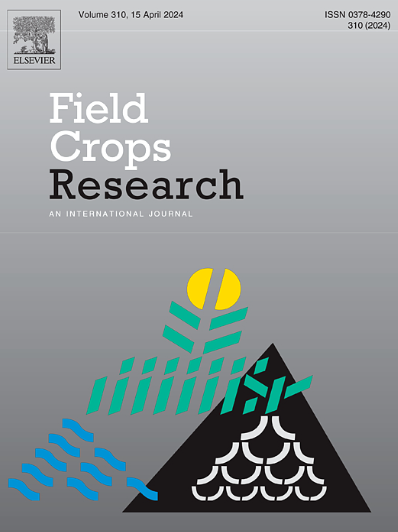Nitrogen nutrition index as an in-season N diagnostic method for maize yield response to N fertilization
IF 5.6
1区 农林科学
Q1 AGRONOMY
引用次数: 0
Abstract
Assessing crop nitrogen (N) status is essential for optimizing fertilizer N inputs for maize (Zea mays L.) crop and reducing the environmental footprint of this practice. The Nitrogen Nutrition Index (NNI) offers a promising method for improved in-season N diagnosis and management. However, there is a need to identify the different types of in-season responses for the relative yield (RY) to NNI (RY-NNI) relationship to develop better management tools and identify the main drivers (weather and soil factors) governing this process. This study aimed to describe the different RY-NNI relationships and identify the main weather and soil drivers influencing these responses. We used ninety-four maize yield to fertilizer N response experiments collected using a standardized protocol from the 2014–2016 growing seasons across the United States (US) Midwestern (including eight US states). Bayesian modeling and conditional inference tree algorithm were employed to assess the different types of RY-NNI relationships and characterize key weather and soil drivers. Three distinct RY-NNI relationships were identified, 60 % of the experiments exhibited a linear-plateau response (n = 56), 27 % a linear response (n = 26), and the remaining 13 % a no response (n = 12). Pre-planting nitrate-N (NO3-N), the Shannon Diversity Index (SDI) from late vegetative (tasseling) to end of season (maturity), and the cumulative precipitation (CPP) from V9 to tasseling were key factors influencing RY-NNI responses. Together, these top three variables accounted for ∼ 50 % of the total relative variable importance. These findings enhance the use of NNI as an in-season N diagnostic tool by providing insights into types of RY-NNI relationships and their drivers.
氮营养指数作为玉米产量对氮肥响应的季节性诊断方法
评估作物氮(N)状况对于优化玉米(Zea mays L.)作物氮肥投入和减少这种做法的环境足迹至关重要。氮素营养指数(NNI)为改进当季氮素诊断和管理提供了一种很有前途的方法。然而,有必要确定相对产量(RY)与NNI (RY-NNI)关系的不同类型的季节性响应,以开发更好的管理工具,并确定控制这一过程的主要驱动因素(天气和土壤因素)。本研究旨在描述不同的RY-NNI关系,并确定影响这些响应的主要天气和土壤驱动因素。我们采用标准化方案收集了2014-2016年 美国中西部(包括美国8个州)生长季节的94个玉米产量对氮肥的响应试验。采用贝叶斯建模和条件推理树算法评估不同类型的RY-NNI关系,并表征关键的天气和土壤驱动因素。三个不同的RY-NNI关系被确定,60 %的实验表现出linear-plateau响应(n = 56),27 %线性响应(n = 26),剩下的13 %没有响应(n = 12)。播前硝态氮(NO3-N)、营养后期(抽雄)至季末(成熟期)的香农多样性指数(SDI)和V9期至抽雄的累积降水量(CPP)是影响RY-NNI响应的关键因子。这前三个变量合计占总相对变量重要性的约50% %。这些发现通过深入了解RY-NNI关系的类型及其驱动因素,增强了NNI作为季节性氮诊断工具的使用。
本文章由计算机程序翻译,如有差异,请以英文原文为准。
求助全文
约1分钟内获得全文
求助全文
来源期刊

Field Crops Research
农林科学-农艺学
CiteScore
9.60
自引率
12.10%
发文量
307
审稿时长
46 days
期刊介绍:
Field Crops Research is an international journal publishing scientific articles on:
√ experimental and modelling research at field, farm and landscape levels
on temperate and tropical crops and cropping systems,
with a focus on crop ecology and physiology, agronomy, and plant genetics and breeding.
 求助内容:
求助内容: 应助结果提醒方式:
应助结果提醒方式:


